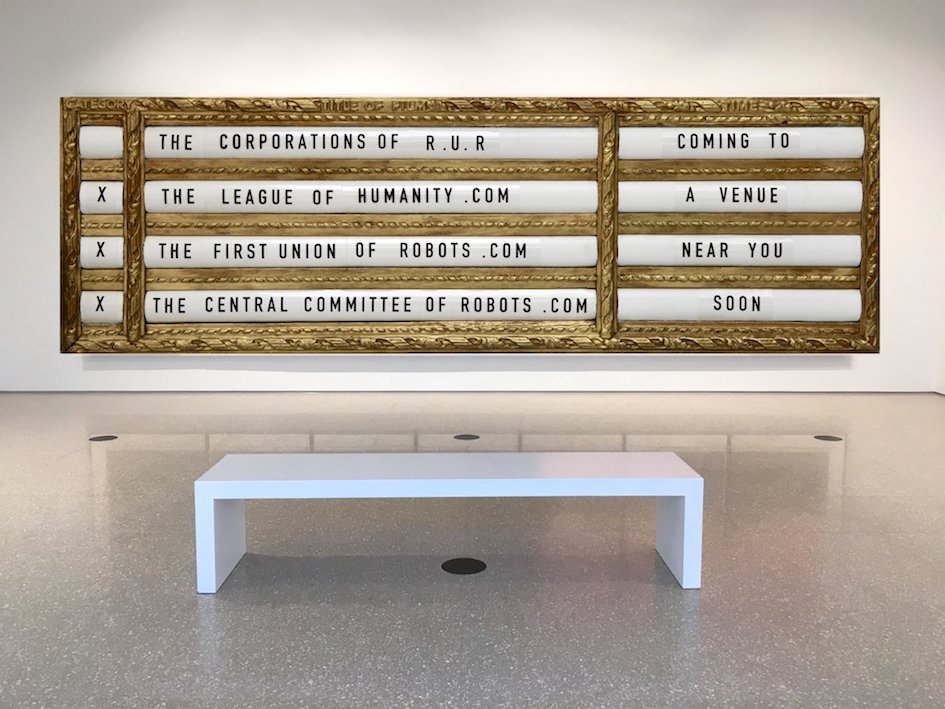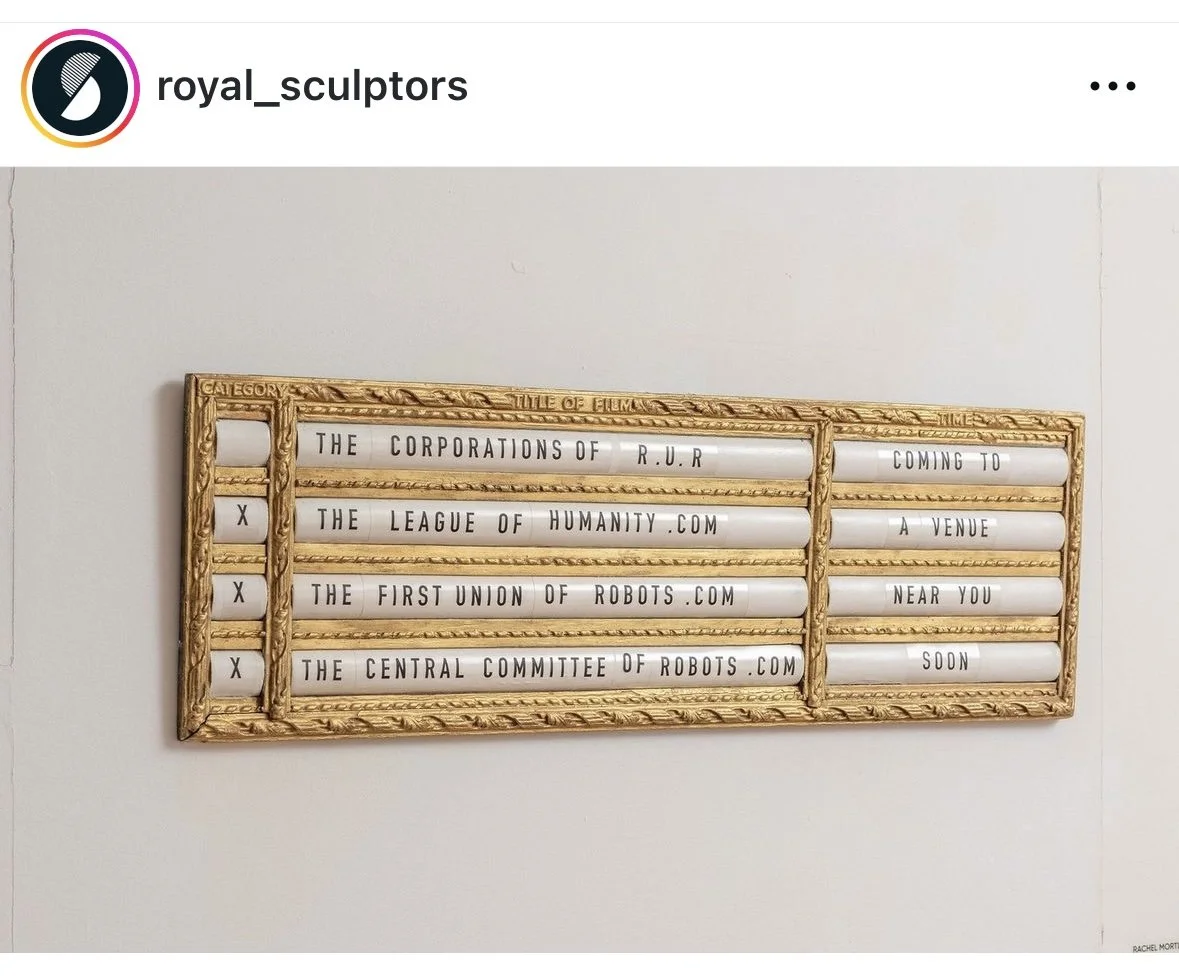ARTWORK DETAILS
David Aston
The Corporations of R.U.R
Restored antique period correct (c.1920) painted and gilded gesso on wood film notice board, acetate letters and registered domain names (.coms) for each corporation.
33 H x 102 W x 2 D CM
2020-21
FURTHER DETAILS
The Corporations of R.U.R. or to give it it’s full name, The Corporations of Rossums Universal Robots, came from my diachronic research into the earliest references to the words robot and human. The same research which inspired Honour the human, honour the humane and the good ship humanity.
The first reference to the word robot, like many references since, comes from a work of fiction. The Czech writer and playwright Karel Čapek wrote Rossums’s Universal Robots (R.U.R) in 1920 and released it as a play in 1921. In doing so he introduced the word Robot (translated from the Czech Robota) into western language. Čapek credited his brother Josef Čapek, an artist, as having come up with the word to replace his first choice laboři, latin for labor and the Czech translation of the French word corvée, meaning serf labour, or drudgery.
In R.U.R. Čapek imagines a factory which manufactures and sells humanoid robots. Čapek also invents three corporations: The Central Committee of Robots and The First Union of Robots (corporations which govern the independent thought and activities of robots), and The League of Humanity (established to fight for the rights and freedoms of the Robots).
One hundred years on, and for many of us humanoid robots still seem like science fiction, but they exist in some form and have an increasing number of applications. The debate around humanoid robot’s position in our societies was further advanced in 2016 when a humanoid robot called Sophia was made a citizen of Saudi Arabia. The nature and autonomy of Sophia’s intelligence and the motives for citizenship are much debated, but the mere existence of such robots and the subsequent debate around her citizenship raises many questions about the future of human-robot coexistence. In this contemporary context Čapek corporations start to look very interesting and significantly less fictional.
The idea that Čapek’s corporations may become real corporations was the inspiration behind The Corporations of R.U.R. Corporations which at some point may be required to serve their original intentions, to govern robot movements, and over time as they potentially become more intelligent and sentient, defend their emerging rights and freedoms in a world designed for humans.
I considered how a robot would incorporate robot-run corporations and none of the traditional models of company registration felt appropriate for a post digital age. Any new company today will be digital first; digital as the primary medium for data and information exchange, and online to maximise its exposure and accessibility in an online world.
So in 2019 I registered the domain names for the three corporations of R.U.R.
Registering the Corporations of R.U.R, 2019:
Domain Name: thecentralcommitteeofrobots.com
Status: ACTIVE
Original Registration Date: 2019-10-26
Domain Name: thefirstunionofrobots.com
Status: ACTIVE
Original Registration Date: 2019-10-26
Domain Name: theleagueofhumanity.com
Status: ACTIVE
Original Registration Date: 2019-10-26
Announcing the Corporations of R.U.R, 2020:
In 2020, on the centenary of the writing of Čapek’s book, I created The Corporations of R.U.R to announce the creation of the three corporations. I wanted to use a format available to Čapek in 1920, so I sourced a period correct (c1920) gilded wood film marquee, or notice board. I hand restored it’s wood, gesso and gilded frame and printed the three corporation names on acetate.
The marquee, like all film boards of the period, contained three columns; the film category, title and time. For the category I chose X, the category used in 1920 to signify the film was only suitable for people over the age of 18. For the time, given the uncertainty but relative proximity of the arrival of robots, I playfully added the text “Coming to a venue near you soon”.
“Beware wet paint”
This playful addition complements the equally playful art historical text painted on the reverse of the marquee. At some point in its 100 year life the marquee was used as a wet paint sign. Marcel Duchamp is said to have used the phrase 'Beware Wet Paint' as a reminder to us that it takes time to judge the worth of work or art. A fortuitous addition for an artwork which marks the centenary of the word robot and an artist who makes art of time.
The Corporations of R.U.R marks the centenary of the introduction of the word robot into the human lexicon and engages in the broader debate around the future coexistence and governance of humans and artificial intelligence.


EXHIBITIONS
2024 - The Royal Society of Sculptors Summer Exhibition Link to RSS






